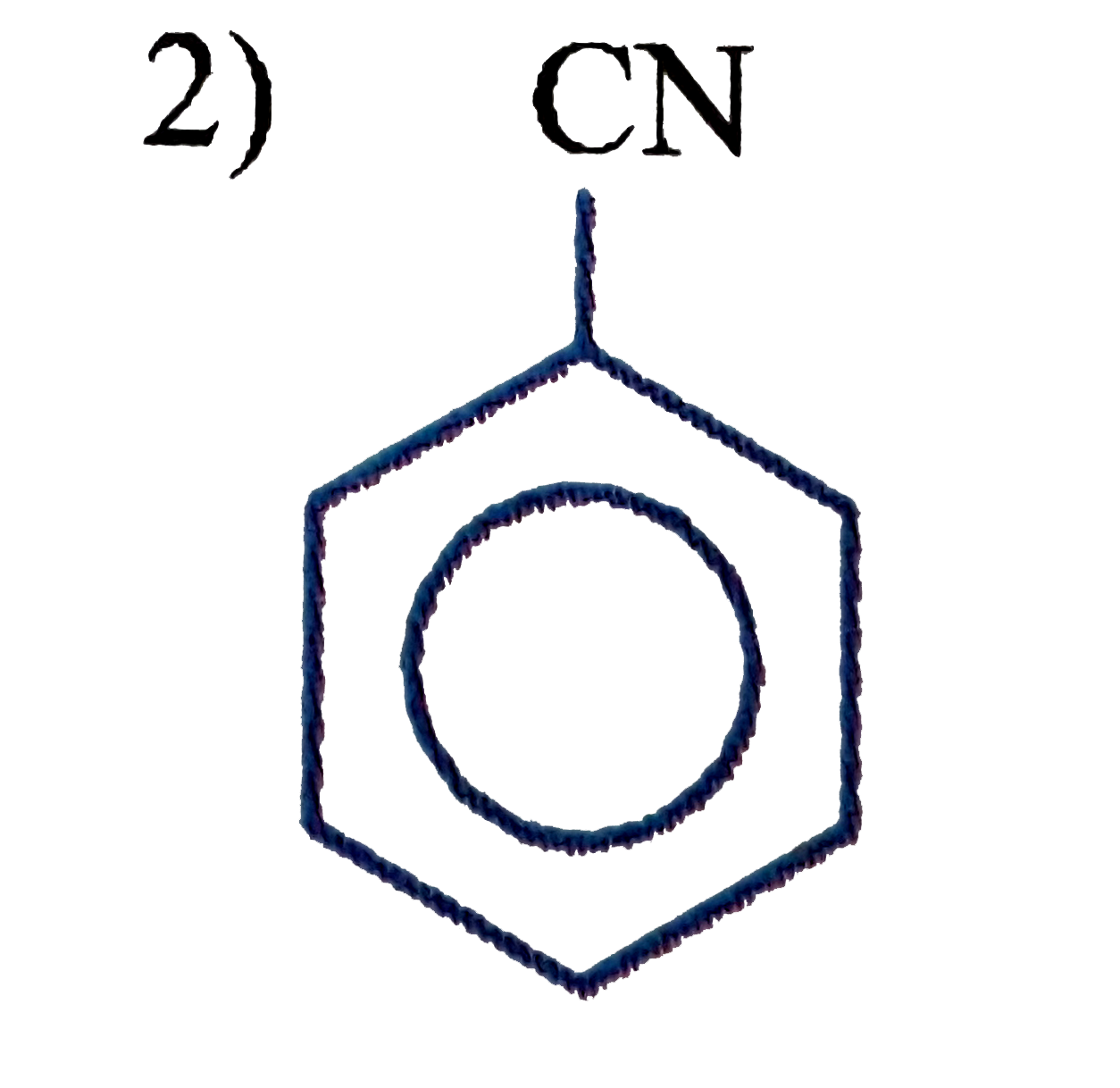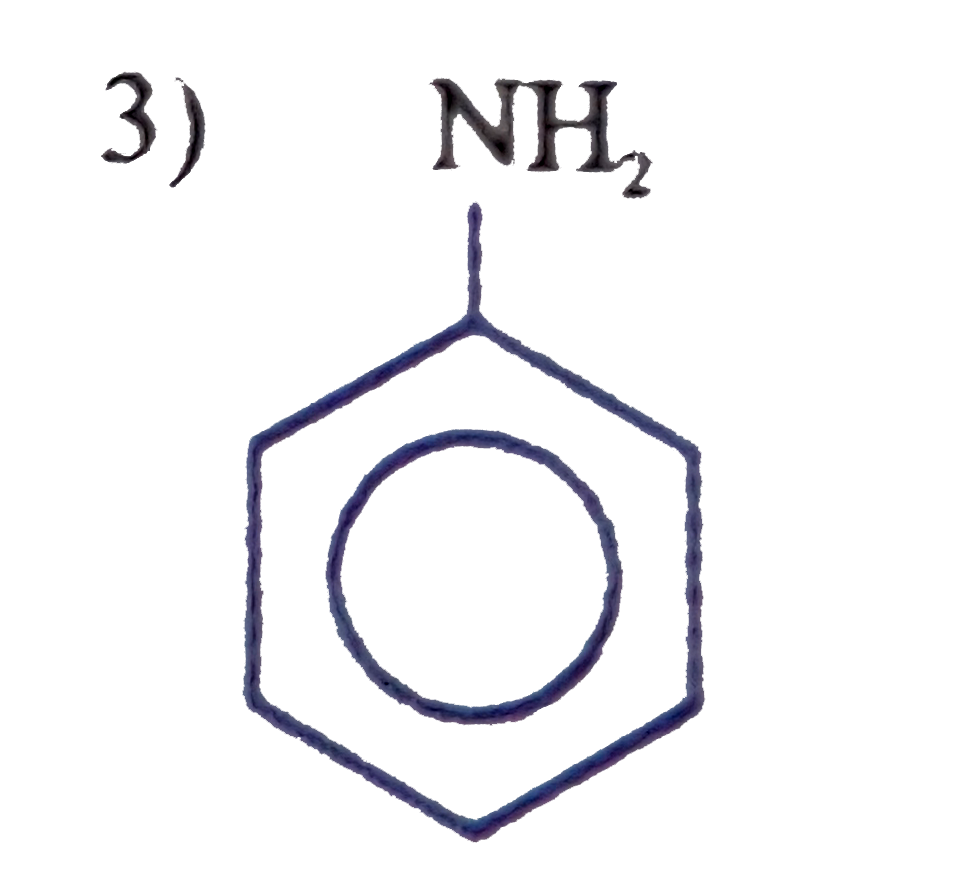An organic compound 'A' on heating with concentrated H2SO4 forms a compound 'B' which on addition of one mole of hydrogen in presence of Ni forms a compound 'C'. One mole of compound 'C' on combustion forms two moles of CO2 and three moles of H2O
When 'B' and 'C' are added separately to the test tubes containing orange-brown liquid X', the colour disappears in case of 'B' but remains same in case of 'C'. The name of the liquid X and the substance responsible for colour change are respectively
Alkaline KMnO4 solution and ethanoic acid
Alkaline KMnO4 and ethanol
Bromine water and 1, 2-dibromoethane
Bromine water and 1, 1, 2, 2-tetrabromoethane.
The correct Answer is:C
To solve the problem step by step, let's break down the information given and analyze it systematically.
Step 1: Identify Compound A
The problem states that an organic compound 'A' is heated with concentrated sulfuric acid (H₂SO₄) to form compound 'B'. This suggests that compound 'A' is likely an alcohol, as sulfuric acid is commonly used to dehydrate alcohols to form alkenes.
Hint: Think about common alcohols that can undergo dehydration.
Step 2: Formation of Compound B
When an alcohol undergoes dehydration with concentrated H₂SO₄, it typically forms an alkene. Given that compound 'B' is formed from compound 'A', we can assume that compound 'B' is likely an alkene.
For example, if we take ethanol (C₂H₅OH) as compound 'A', upon dehydration, it would form ethene (C₂H₄) as compound 'B'.
Hint: Consider the structure of simple alcohols and their dehydration products.
Step 3: Hydrogenation of Compound B
Next, compound 'B' (the alkene) is treated with hydrogen in the presence of a nickel catalyst, which suggests hydrogenation. This process will convert the alkene into an alkane.
Continuing with our example, if compound 'B' is ethene (C₂H₄), adding hydrogen would yield ethane (C₂H₆) as compound 'C'.
Hint: Remember that hydrogenation adds hydrogen across the double bond of alkenes.
Step 4: Combustion of Compound C
The problem states that one mole of compound 'C' on combustion produces two moles of CO₂ and three moles of H₂O. The combustion reaction can be represented as:
CxHy+O2→CO2+H2O
For ethane (C₂H₆), the combustion reaction is:
C2H6+7/2O2→2CO2+3H2O
This matches the information given in the problem, confirming that compound 'C' is indeed ethane.
Hint: Use the general combustion equation to verify the products.
Step 5: Reaction with Liquid X
The problem mentions an orange-brown liquid 'X' that reacts with compound 'B' but not with compound 'C'. The orange-brown color suggests that liquid 'X' is likely bromine water (Br₂ in water), which is known for its distinctive color.
When bromine water is added to compound 'B' (the alkene), the color disappears due to the addition reaction forming a dibrominated compound. However, since compound 'C' (the alkane) does not have a double bond, it does not react with bromine water, and the color remains unchanged.
Hint: Recall that alkenes react with bromine water, while alkanes do not.
Conclusion
From the above analysis, we can conclude:
- Liquid 'X' is bromine water.
- The substance responsible for the color change is the alkene (compound 'B').
Final Answer
The name of the liquid X is bromine water and the substance responsible for the color change is compound B (the alkene).
The problem states that an organic compound 'A' is heated with concentrated sulfuric acid (H₂SO₄) to form compound 'B'. This suggests that compound 'A' is likely an alcohol, as sulfuric acid is commonly used to dehydrate alcohols to form alkenes.
When an alcohol undergoes dehydration with concentrated H₂SO₄, it typically forms an alkene. Given that compound 'B' is formed from compound 'A', we can assume that compound 'B' is likely an alkene.
Next, compound 'B' (the alkene) is treated with hydrogen in the presence of a nickel catalyst, which suggests hydrogenation. This process will convert the alkene into an alkane.
The problem states that one mole of compound 'C' on combustion produces two moles of CO₂ and three moles of H₂O. The combustion reaction can be represented as:
CxHy+O2→CO2+H2O
C2H6+7/2O2→2CO2+3H2O
The problem mentions an orange-brown liquid 'X' that reacts with compound 'B' but not with compound 'C'. The orange-brown color suggests that liquid 'X' is likely bromine water (Br₂ in water), which is known for its distinctive color.
From the above analysis, we can conclude:
- Liquid 'X' is bromine water.
- The substance responsible for the color change is the alkene (compound 'B').
The name of the liquid X is bromine water and the substance responsible for the color change is compound B (the alkene).
Topper's Solved these Questions
- NSO QUESTION PAPER 2016 SET ABook:SCIENCE OLYMPIAD FOUNDATION Chapter:NSO QUESTION PAPER 2016 SET AExercise:Achievers Section
Explore 3 Videos
- METALS AND NON-METALSBook:SCIENCE OLYMPIAD FOUNDATION Chapter:METALS AND NON-METALSExercise:ACHIEVERS SECTION (HOTS)
Explore 5 Videos
- NSO QUESTION PAPER 2016 SET B Book:SCIENCE OLYMPIAD FOUNDATION Chapter:NSO QUESTION PAPER 2016 SET B Exercise:Achievers Section
Explore 2 Videos
Similar Questions
An organic compound A on heating with concentrated H2SO4 forms a compound B which on addition of one mole of hydrogen in presence of Ni forms a compounds C. One mole od compound C on combustion form two moles of CO2 and three moles of H2O. Identify the compounds A,B and C write the chemical equation of the reactions involved.
View SolutionAn organic compound A on heating with concentrated H2SO4 forms a compound B which on addition of one mole of hydrogen in presence of Ni forms a compounds C. One mole od compound C on combustion form two moles of CO2 and three moles of H2O. Identify the compounds A,B and C write the chemical equation of the reactions involved.
View Solution
Knowledge Check
An organic compound 'A' on heating with concentrated H2SO4 forms a compound 'B' which on addition of one mole of hydrogen in presence of Ni forms a compound 'C'. One mole of compound 'C' on combustion forms two moles of CO2 and three moles of H2O.
Which of the following represents the compound 'C' ?AC2H6, a saturated hydrocarbonBC2H4, an unsaturated hydrocarbonCHCOOH, an unsaturated acidDC2H5OH, a saturated alcoholAn aromatic compound 'A' on treatment with aqueous ammonia and heating forms compounds 'B' which on heating with Br2 and KOH forms a compound 'C' of molecular formula C6H7N.
The compound 'B' isA B
B C
C D
D
An aromatic compound 'A' on treatment with aqueous ammonia and heating forms compounds 'B' which on heating with Br2 and KOH forms a compound 'C' of molecular formula C6H7N.
The compound 'A' may beA B
B C
C D
D
An organic compound 'X' on heating with conc. H2SO4 forms a compound 'Y' which on addition of one molecule ofhydrogen in the presence of nickel forms a compound 'Z'. One molecule of compound 'Z' on combustion forms two molecules of CO2 and three molecules of H2O. Identify, giving reasons the compounds X,Y and Z. write the chemical equations for the reactions involved.
View SolutionAn organic compound A reacts with sodium hydroxide to form a compound B. B when heated with sodalime forms a compound B. B when heated with sodalime forms a compound C.One mole of C burns in oxygen to produce one mole of CO2 and two moles of H2O. Identify A, B and C.
View SolutionAn aromatic compound 'A' on treatment with aqueous ammonia and heating forms compounds 'B' which on heating with Br2 and KOH forms a compound 'C' of molecular formula C6H7N.
The conversion of B to C is
View SolutionNumber of moles of hydrogen will required for complete hydrogenation of one mole of following compound

View SolutionThe combustion of one mole of propane, C3H8,produces how many moles of H2O?
View Solution